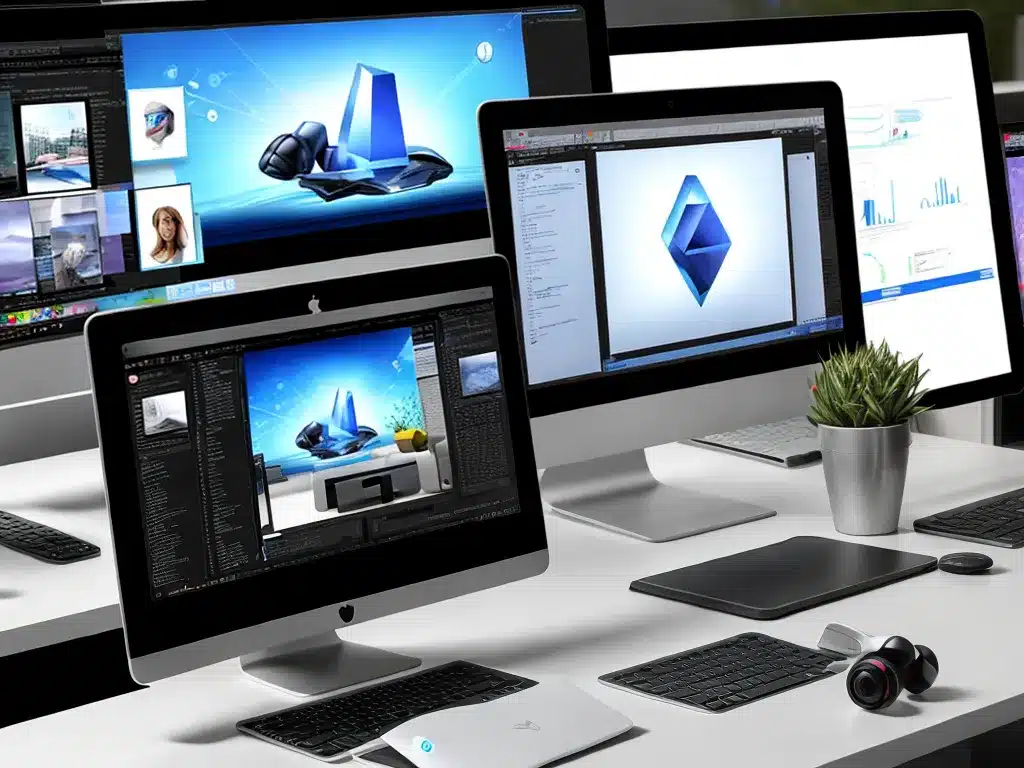
Augmented reality (AR) is transforming how we interact with computers and information. While AR is often associated with mobile devices and headsets, innovative companies are bringing these capabilities to our desktop environments as well. In this article, I will provide an in-depth look at the emergence of augmented reality desktops and what we can expect in the future.
What is an Augmented Reality Desktop?
An augmented reality desktop utilizes AR technology to enhance and expand the capabilities of traditional computer environments. Just like AR overlays digital information onto the physical world through mobile cameras, an AR desktop layers graphics, text, video and other digital content onto the user’s screen and surroundings.
Some key characteristics of AR desktops include:
-
Immersive 3D environments – The desktop environment becomes a 3D space that users can explore and interact with, rather than a flat 2D screen. Objects like windows and files take on physical properties.
-
Spatial computing – Users engage with digital content positioned freely in 3D space around them, breaking the limits of the rectangular screen.
-
Environmental blending – Virtual objects blend into the actual office or room environment, creating a seamless augmented workspace.
-
Multimodal interfaces – AR desktops incorporate hand tracking, gesture control, voice commands and more for intuitive interaction.
-
Cross-device capabilities – Content flows seamlessly across desktop PCs, mobile devices and AR headsets within the same AR ecosystem.
Current AR Desktop Platforms
Several technology companies are developing augmented reality desktop platforms and prototypes, each with unique capabilities:
Nvidia Omniverse
Nvidia’s Omniverse platform provides tools for creating shared virtual 3D worlds for design, simulation and real-time collaboration. Omniverse Nucleus brings real-time ray tracing and AI technologies to Windows PCs, allowing users to view their standard desktop windows and objects within an interactive, physically accurate 3D scene.
Spatial
Spatial offers an AR collaboration platform where users can interact with 3D content and remote participants in augmented workspaces. Spatial’s desktop app uses PC webcams, hand tracking and AR displays to merge virtual workspace tools with the real physical environment.
Arthur
Arthur from startup Virtalis positions 2D desktop windows arbitrarily in a 360-degree virtual environment using VR-style head tracking and ray-based interaction. Users can arrange screens around them and switch between realities using a software switcher.
Potential Use Cases
Here are some potential use cases that highlight the unique capabilities of AR desktop environments:
-
Immersive data visualization – Data scientists can be immersed in 3D data visualizations, using natural movement to explore from all angles.
-
Augmented CAD/CAM design – Engineers and designers can seamlessly blend virtual 3D models with real-world environments for prototyping and testing.
-
Virtual offices – Remote teams can meet in augmented virtual workspaces that match their real office environments and spatial orientation.
-
Assisted manufacturing – Factory workers can access step-by-step instructions overlaid onto equipment to improve training and efficiency.
-
Enhanced creative workflows – Animators, editors and artists gain spatial context with their projects and tools surrounding them in 3D.
Future Outlook
While still emerging, augmented reality desktops have massive disruptive potential across industries. As headsets get smaller and spatial computing software improves, AR desktop environments could eventually become common alternatives or companions to traditional 2D GUI systems.
Key trends to watch include:
-
Adoption in enterprise – Big tech companies lead, niche use cases prove value.
-
Consumer availability – AR desktop capability comes to affordable mainstream devices.
-
Advances in hand tracking – More intricate hand/finger tracking enables advanced spatial interaction.
-
Synergy with VR/XR – AR desktops complement virtual reality with mixed real/virtual capabilities.
-
Proliferation of 3D content – Content formats and tools designed for augmented 3D workspaces.
The promise of blending our digital and physical worlds is closer than ever with augmented reality desktop technologies. While challenges remain around UI design and seamless switching between realities, AR promises to revolutionize how we visualize and interact with computing environments. Exciting times lie ahead.












